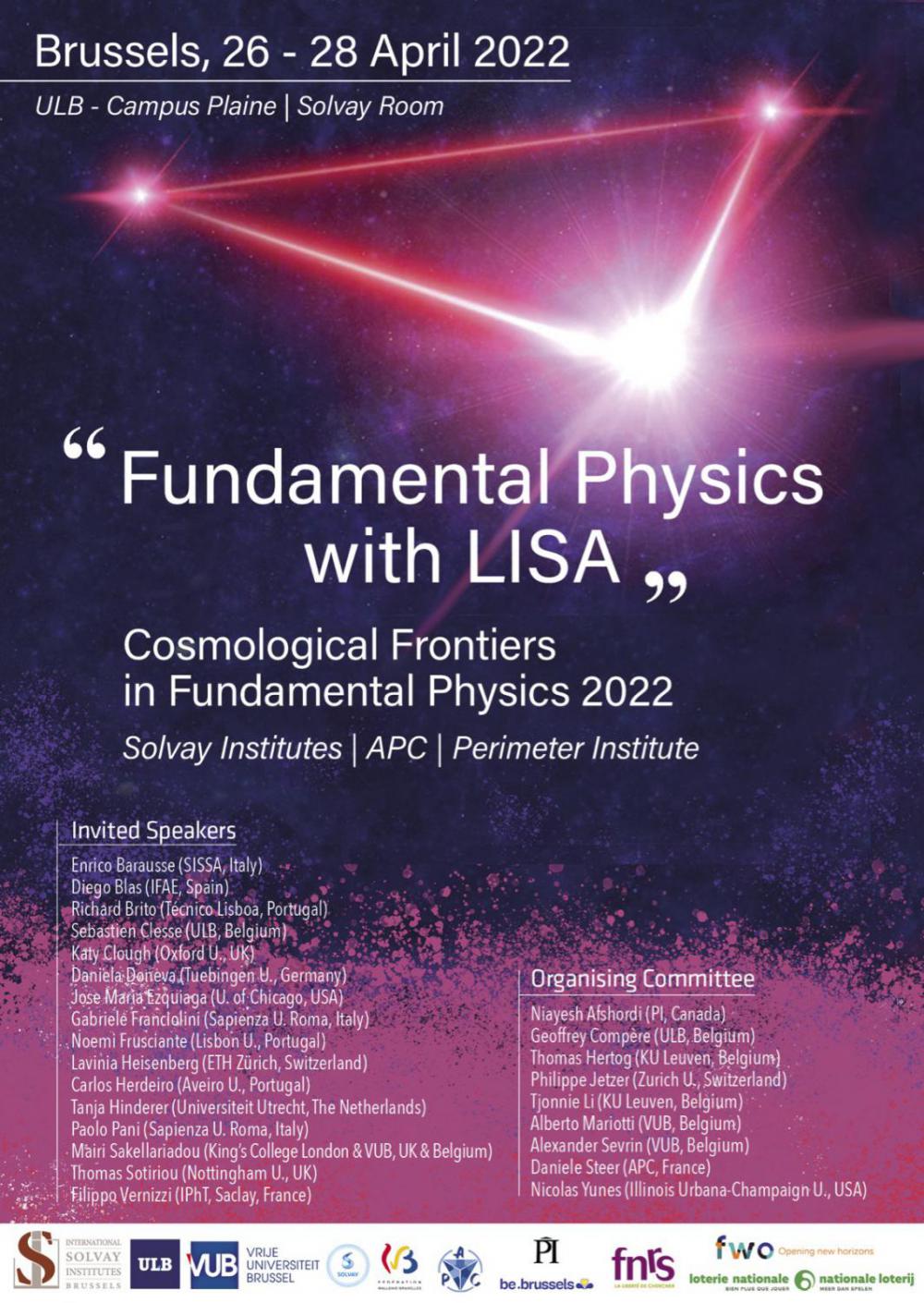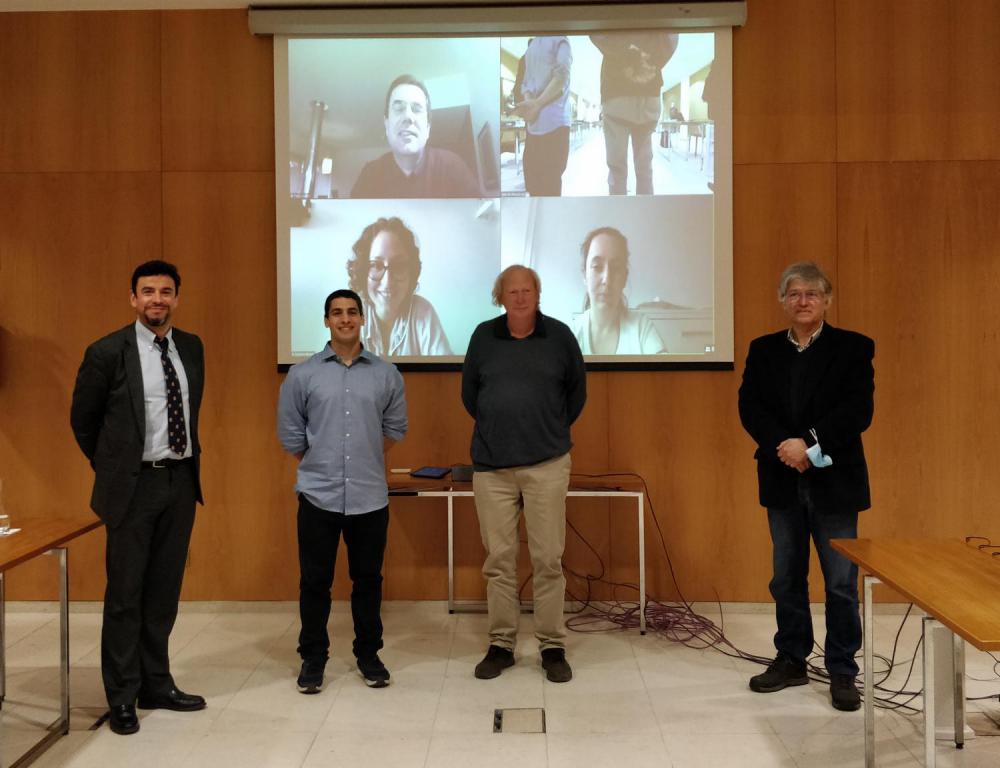Strong Gravity News & Events
Fundamental Physics with LISA
The Workshop "Fundamental Physics with LISA", coorganized by the Solvay Institutes, APC and Perimeter Institute, will take place in Brussels from 26-28 April 2022. C. Herdeiro is one of the invited speakers.
Black holes course for high school teachears and undergraduate students
Gr@v, together with the Portuguese Physics Society and the EPS Young Minds Aveiro (association of Physics students) is promoting a (non-technical) black holes course, online, for high school teachears and undergraduate students.
Light rings and long-lived modes in quasiblack hole spacetimes
It has been argued that ultracompact objects, which possess light rings but no horizons, may be unstable against gravitational perturbations. In this seminar, I will talk about our recent work on the light rings in quasi- black hole solutions which is a family of horizonless spacetimes whose limit is the extremal Reissner- Nordstr¨om black hole.
Universal relations for rotating Boson Stars
Boson stars are hypothetical but widely considered exotic compact objects known as ``black-hole mimickers” whose mergers may produce gravitational-wave emissions observable by current ground-based detectors like Advanced LIGO and Virgo.
Alexandre Pombo's Ph.D. exam
Alexandre Pombo successfully defended his Ph.D. thesis, entitled "Black holes and solitonic objects with bosonic fields" on April 8 2022. The Ph.D. committee included Arnaldo Martins (President, UA), Daniela Doneva (Tubingen), Yves Brihaye (Mons), Carolina Benone (UFPA), Pedro Avelino (IA, UP) and Carlos Herdeiro (UA, advisor). The thesis was co-advised by Eugen Radu. Congratulations Alexandre!
Gravitational waves from spontaneously scalarized black holes
Enhancing gravitational-wave population inference with deep learning
Gravitational-wave population studies have become a common approach to learn about the astrophysical distribution of merging stellar-mass binary black holes. The goal is to map the source properties (e.g., masses and spins) of events observed by ground-based interferometers, which have been filtered through detection biases, to the true parameter distributions as a whole across the population.
The Beauty of Self-Duality
Topological solitons play an important role in many areas of Physics. In some cases they constitute the {\em normal modes} of field theories in the strong coupling regime. There is a class of topological solitons that are special. They are solutions of first order differential equations (self-dual eqs.) that also solve the second order Euler-Lagrange equations.
Finsler spacetimes and its applications to cosmology and wildfire propagation
We will first show how Finsler spacetimes naturally appear as a tool to solve the time-dependent Zermelo problem in a manifold M, or more generally, the problem of finding the shortest trajectory in time when the velocity is prescribed at any direction and any instant of time, namely, the velocity is a function of the direction and the time.


